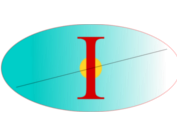Citation:
| hod2006.pdf | 205 KB |
Abstract:
Control of conductance in molecular junctions is of key importance in the growing field of molecular electronics. The current in these junctions is often controlled by an electric gate designed to shift conductance peaks into the low bias regime. Magnetic fields, on the other hand, have rarely been used due to the small magnetic flux captured by molecular conductors ( an exception is the Kondo effect in single-molecule transistors). This is in contrast to a related field, electronic transport through mesoscopic devices, where considerable activity with magnetic fields has led to a rich description of transport. The scarcity of experimental activity is due to the belief that significant magnetic response is obtained only when the magnetic flux is of the order of the quantum flux, while attaining such a flux for molecular and nanoscale devices requires unrealistic magnetic fields. Here we review recent theoretical work regarding the essential physical requirements necessary for the construction of nanometer-scale magnetoresistance devices based on an Aharonov-Bohm molecular interferometer. We show that control of the conductance properties using small fractions of a magnetic flux can be achieved by carefully adjusting the lifetime of the conducting electrons through a pre-selected single state that is well separated from other states due to quantum confinement effects. Using a simple analytical model and more elaborate atomistic calculations we demonstrate that magnetic fields which give rise to a magnetic flux comparable to 10(-3) of the quantum flux can be used to switch a class of different molecular and nanometer rings, ranging from quantum corrals, carbon nanotubes and even a molecular ring composed of polyconjugated aromatic materials. The unique characteristics of the magnetic field as a gate is further discussed and demonstrated in two different directions. First, a three-terminal molecular router devices that can function as a parallel logic gate, processing two logic operations simultaneously, is presented. Second, the role of inelastic effects arising from electron-phonon couplings on the magnetoresistance properties is analyzed. We show that a remarkable difference between electric and magnetic gating is also revealed when inelastic effects become significant. The inelastic broadening of response curves to electric gates is replaced by a narrowing of magnetoconductance peaks, thereby enhancing the sensitivity of the device.
Notes:
RBaer-Publication



